You have a business up and running. However, you can’t grow it and run it to its full potential unless you reach your target audience effectively. And you have competitors trying to woo the same target audience for every product/service that you offer.
In the face of such fierce competition, it’s difficult to provide something unique that will completely blow consumers’ minds. This is why you need to understand the psychology of brand trust. You need to get people to trust your brand so that they choose you over the competition.
Trust is the factor that distinguishes a brand from a business. It can make or break your business. In this age of social media, word-of-mouth marketing and influencer marketing are at their peaks. So you need to strive to create a good online reputation and build brand trust.
Here’s how you can build brand trust among your audience.
Provide value
One of the most important factors to build brand trust is to provide value to your customers. You must put your customers first, not your revenue. You should give them a product that solves their problems and makes life easier for them. It shouldn’t be all about the money.
If your product genuinely helps consumers, you will be able to build long-term relationships with them. A product that provides value to your customers will not only sell well but will also build brand trust.
To further enhance your value proposition, you can give them added value. This could be in the form of easy refunds, attractive discounts, or even free trials. This added value can make your customers feel that they’ve got something for free from your brand. Such small rewards and gestures can go a long way in building brand trust.
Pay attention to feedback
You must pay attention to the feedback that you receive from your customers. It is a great way to learn about what your customers are experiencing. You can find out their pain points as well as the things they love about your brand.
Once you’ve zeroed in on their pain points, you can strive to fix them. This can help you improve your brand’s image in their minds. When you improve upon what they want, they’ll feel that your brand cares for them. This will then compel them to develop trust for your brand. Adaptability is the key to building a successful brand.
Display trust seals
One way to enhance brand trust is by displaying trust seals on your website. These seals showcase the legitimacy of your brand and work as stamps of approval. First-time visitors may trust you more if they see a trust seal.
It doesn’t matter much which trust seal you have. What matters is that you have one.
If you have a trust seal, consumers have their stamp of approval for your website. This is why you shouldn’t just pay attention to making your site secure, but also show it to your customers.
You need to show them that you’re doing enough to make sure that their information and transactions are secure. You can do this by getting trust seals from reputed agencies. This way you can build brand trust with your audience.
Solid customer support
Your potential customers are a skeptical lot. Before deciding to spend their money on your offerings, they want to know what others are saying about your brand. They will likely look for online reviews in all corners of the internet.
In fact, 85% of people trust online reviews just as much as they trust personal recommendations according to BrightLocal. Additionally, 73% of consumers trust a business more if they see positive reviews. So, even one negative review could make them change their mind.
Does that mean you should hush up anyone who offers criticism to your brand? The answer, of course, is no. Rather, you should have a strong customer support system to address these grievances. Make sure every review, positive or negative, receives an appropriate response and resolution.
This enables your brand trust to grow in two ways. Firstly, your existing customers feel valued. They are assured that in case of any problems, they can turn to your customer support team for help. This increases their chance of coming back to your brand, even if the first experience was sour.
Secondly, it wins you the confidence of potential customers who are scrolling through your online reviews. They get the impression that you are extremely proactive in resolving your clients’ problems. They feel assured that you won’t abandon them after taking their money.
Your prospective customers will also look you up on social media. The previously-cited BrightLocal study found that the Better Business Bureau is the most trusted review site for local searches.
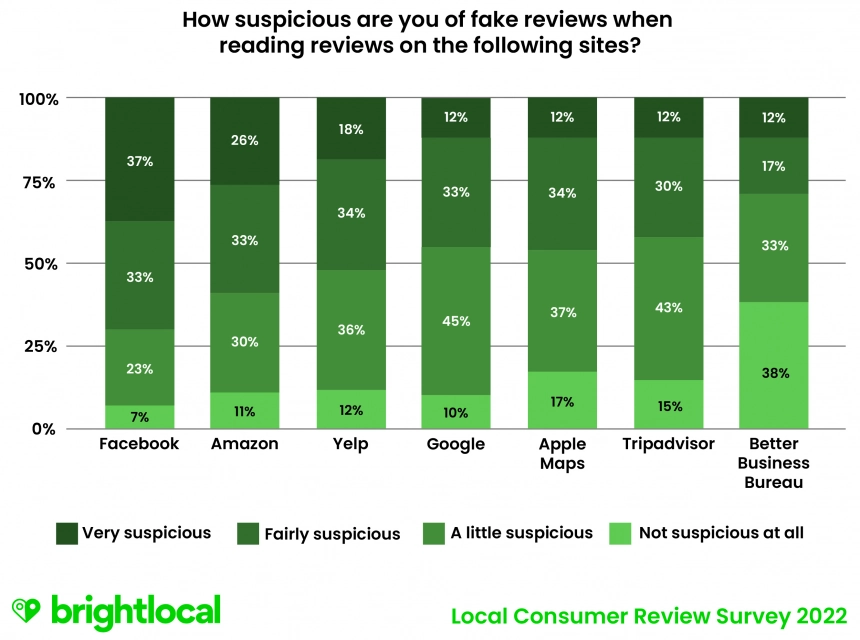
Make sure you have active accounts on popular social networking sites such as Facebook, Twitter, and Instagram. You must also respond to comments on your social media posts. This also conveys the message that you value your customers and actively engage with them.
The power of influencer marketing
The days of brands blowing their own horns are gone. People tend to rely more on feedback from friends, relatives, or experts. A study by Collective Bias showed that 70% of millennials are influenced by people close to them for buying choices. Therefore, you need to revise your strategies to reach them.
This is where influencer marketing comes into play. Your target audience is on social media platforms on their smartphones, tablets, and laptops. You can collaborate with influencers who are perceived as experts on certain subjects by your target audience.
It is highly likely that your target audience is already following influencers in various niches. This is where you can tap into the immense potential of influencer marketing to win brand trust. When an influencer reviews a brand on his/her social media channel, it automatically creates a buzz amidst their followers.
Unlike marketers, influencers are perceived as real-life customers, who wouldn’t sell a product just for their own vested interests. When they share a testimonial, their followers think of it as a genuine and unbiased review. This, in turn, boosts the credibility of your brand and drives leads towards your business.
For instance, Chiara Ferragni is a popular fashion influencer on Instagram. She has collaborated with several fashion brands by promoting them to her audience.
As marketers, you can adopt various strategies for influencer marketing. You can collaborate with influencers in your niche and get them to do a shout-out for your brand. Or you can develop elaborate marketing campaigns exploring various channels including videos, blogs, etc.
Influencer marketing is a lot easier with software such as Grin. It allows you to successfully run tailor-made influencer marketing campaigns. The app’s easy interface also enables you to track your campaign’s performance and determine its ROI. You can also find influencers in your niche, contact them, and even make payments through the platform.
Be honest
You should try to be as transparent as possible with your audience. This means you should be open about both your strengths and weaknesses. You shouldn’t lie to your audience even if it means that you may lose a few customers.
The Deloitte Millennial Survey found that Gen Y and Gen Z trust in organizations is extremely low. Scores for business’ societal impact dropped 3% for both Gen Z and Millennials, continuing the falling score over the past 5 years. According to the study, Gen Z ranked 45% and Millennial’s ranked 44% out of a score of 100 on a scale of positivity regarding the question “What impact do you think businesses are having on the wider society in which they operate?”.
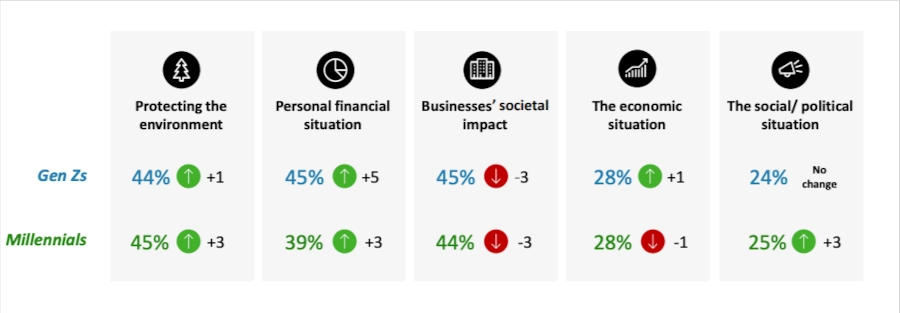
For this reason, you need to be honest and take care of your customers. You must show them that your brand cares for them, their needs, and their concerns. You should be willing to help them get what they want, which will instill trust in your brand. Transparency shows them that you don’t have anything to hide from them, and in some cases, demonstrates that you share their social concerns and are taking action to remedy them.
Leverage customer reviews and testimonials
Using customer testimonials is a great way to build brand trust among your audience. Seeing how other people benefitted from your product instills confidence in others about the product’s quality.
Check out this product page from the cosmetics company Boom. They have added customer reviews and ratings for the product right on the product purchase page. So, when a potential customer lands on that page, they can read all of these positive reviews from other users of that product.
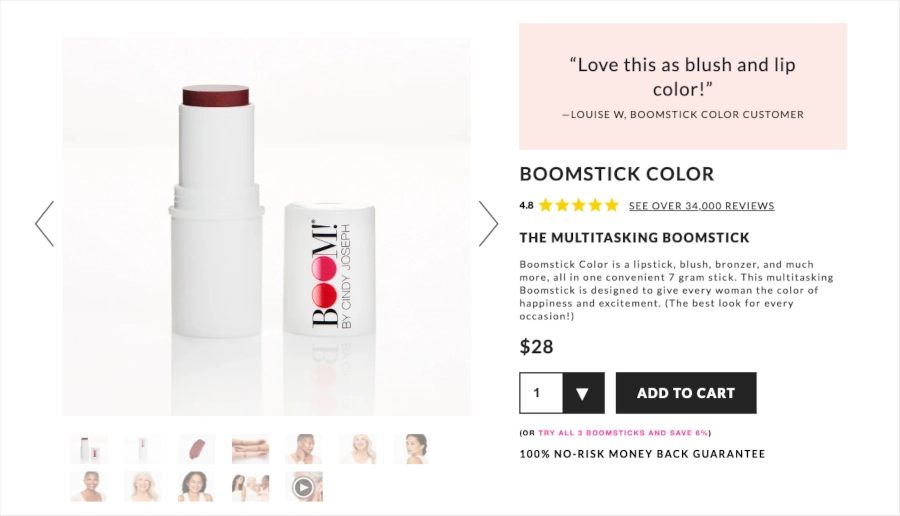
Moreover, they have also included customer testimonials in the form of videos where users share their experiences of using the product.
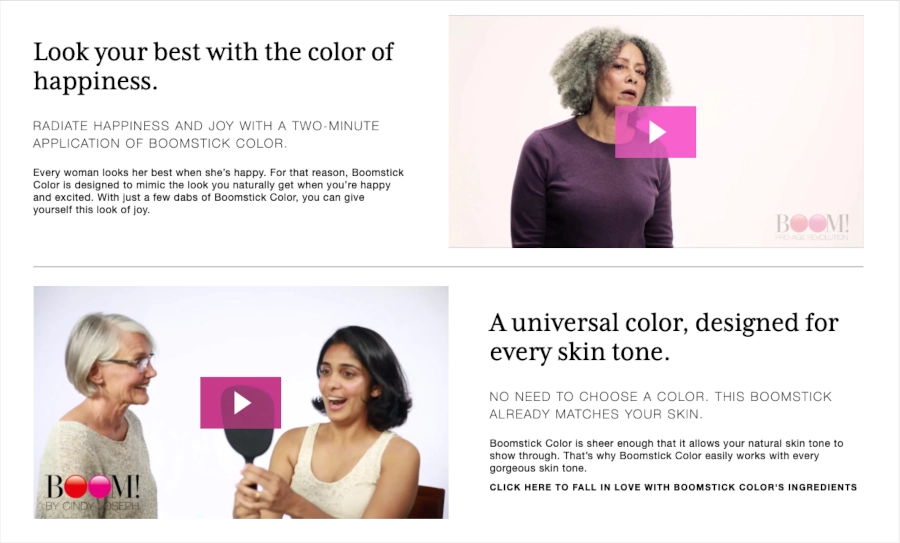
What better way to build brand trust than by letting your existing users convince your potential customers? This provides social proof, alleviates consumer concerns about buying the product, and builds brand trust.
Use statistics, research, and case studies
This is a sure-shot way to build brand trust and gain the confidence of consumers. Providing hard facts and numerical proof is one of the best ways to convince someone about your product’s quality.
Moreover, showing this hard proof substantiates any qualitative claims that your brand makes. Instead of just asking your audience to take your word for it, you need to show some facts. And that’s where research, case studies, and other quantitative data can help you.
Take the case of Heraux for example. It is a skincare company that claims that their Molecular Anti-Inflammaging Serum has multiple benefits for the skin, including protecting stem cells and reducing wrinkles.
But, instead of just making an unsubstantiated claim, they decided to conduct a clinical trial to validate their claims. They display the results of the clinical trial on their website to provide proof that their products actually work.
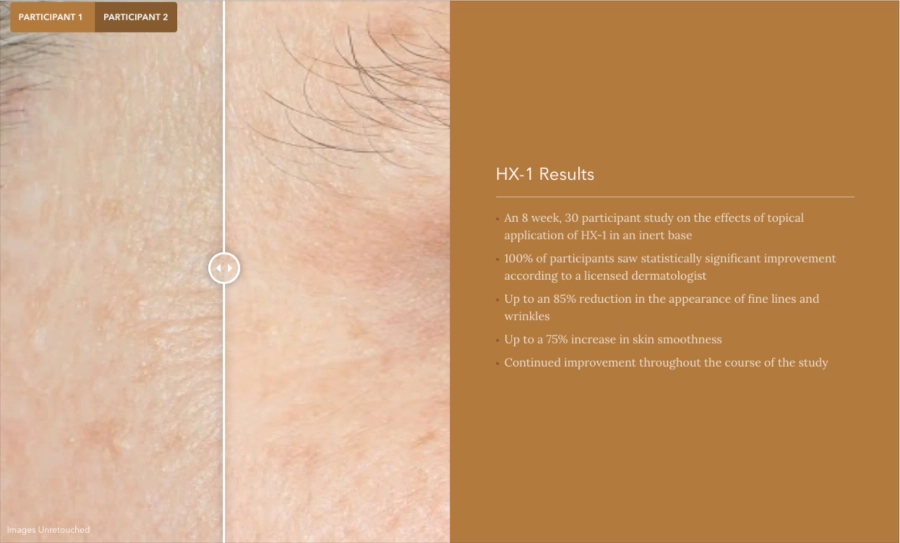
Share your brand’s story
Sharing your brand’s story is a good way to help consumers connect with your brand and build brand trust. Stories can humanize your brand and help build a strong emotional connection with consumers.
Stories also leave a lasting impression and are quite memorable. According to research, stories are 22 times more memorable than just facts.
So, if you share your brand’s story, chances are that people will remember it and connect with it more. And, when consumers have an emotional connection with a brand, they will trust it more.
The social network for professionals, LinkedIn, uses stories to connect with their audience and build brand trust. They have an Instagram page called @LinkedInLife where they post about behind-the-scenes events at their offices. They tell stories about their values, culture, and their employees’ career journeys.
Here’s one such post that talks about the company’s culture and how relationships are an integral part of it.
Conclusion
You can set up a new business in a matter of months. However, it takes years of patience and perseverance to build a brand. One wrong move on your part can severely tarnish your brand’s image. Therefore, you need to focus your marketing strategies on establishing brand trust.
Are you ready to stake your claim in the creator economy? Discover more helpful tips and resources from the experts at GRIN: Creator Management Learning Center

















